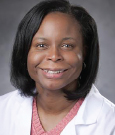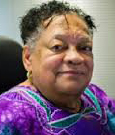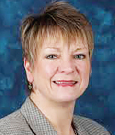Studies demonstrate that patients with advanced cancer who are not actively engaged in planning their end-of-life care often receive overly aggressive, physically taxing, costly and unnecessary treatment toward life’s end. Recent findings indicate that African Americans appear to be more apt to request aggressive end-of-life care than white patients—and far less likely to embrace palliative care and hospice programs. These clinical biases among African Americans with advanced disease result in poorer outcomes compared with their white counterparts.
A Multilayered Issue of Trust
According to federal data, only one-third of eligible African American Medicare beneficiaries enroll in hospice, compared with one-half of white beneficiaries—a racial gap that is expected to grow. Likewise, the gap between the races is even wider in advanced care planning, with about 40% of white seniors over the age of 70 having advanced care–planning documents vs approximately 16% of African American seniors. Also, as more minority seniors join the ranks of Medicare—up to 42% of those over the age of 65 by the year 2050—the racial gap in quality care is likely to widen.
This disparity in quality end-of-life care among African Americans may reflect lack of access to providers, insufficient health insurance, patients living in poverty, or a general mistrust of the health-care system. According to Kimberly S. Johnson, MD, a geriatrician and palliative care specialist at Duke University, endemic suspicion of the U.S. health-care system stemming from historical exploitation—such as the infamous Tuskegee syphilis experiment carried out from 1932–1972 on unsuspecting black men in Alabama—is one reason African Americans are less likely than white Americans to entrust their end-of-life care to palliative care specialists and hospice experts.
“However, my research shows that today’s ongoing disparities in our health-care system among African Americans are actually more relevant to this issue than the historical backdrop. Put simply, many African Americans feel that they receive lower quality health-care services than white Americans,” commented Dr. Johnson.
She continued: “So if you believe that the system is unfairly prejudiced against you and someone proposes hospice as a choice, which essentially focuses entirely on comfort instead of the more costly disease-modifying therapies, you’re probably going to be suspicious and far less likely to embrace hospice.”
Policy and Education
Dr. Johnson noted that some disparity-of-care issues could be dealt with on the policy level. “There’s a demonstration project called the Medicare Choices program, which is testing a model of care in which patients will be able to receive hospice-type care along with disease-modifying care, so they are not asked to choose one care direction over another. This approach might improve the relationship and trust African Americans have with the health-care system, which in turn would lead to greater utilization of hospice,” said Dr. Johnson.
When asked whether the relatively new initiative to integrate spirituality into the continuum of end-of-life care could help bridge some of the mistrust of the system among African Americans, Dr. Johnson replied: “There are really no data that can link bringing spirituality into care helps the mistrust issue. However, studies such as those by Tracy Balboni, MD, MPH, and others do indeed show that support of terminally ill patients’ spiritual needs by the medical team is associated with fewer calls for aggressive care, greater hospice utilization, and overall better quality of life near death.”
Noting that education is key to bridging the trust gap among African Americans, Dr. Johnson commented: “Given the strong ties African Americans have traditionally held with their churches, there is the opportunity for pastors and other religious leaders to serve as outreach and educational conduits to their congregations about the benefits of programs like hospice.”
Disparity of Doctors
Several studies have found that patients who are treated by physicians with whom they share racial or gender characteristics report greater satisfaction with their care and higher rates of medication compliance. Moreover, African American medical students appear to be likelier than any other group to have a firm commitment to practicing in underserved areas, with 55% saying they plan to do so. Furthermore, African Americans account for 13% of the U.S. population, but only 6% of 2011 matriculants were African American, as are just 4% of practicing doctors.
Asked how the lack of African American doctors affects end-of-life care, Dr. Johnson said: “Certainly in the clinical settings of palliative care and hospice, people naturally feel more comfortable having a doctor that looks like them and shares cultural similarities. A recent report by the Association of American Medical Colleges (AAMC) assessed the issue of underrepresentation of African American doctors in the system and offered several ways forward. There have been local initiatives to recruit African American students into medical schools, with some success, but the problem has deep roots, and we still have a long way to go.”
In 2010, President Obama signed the Affordable Care Act (ACA) into law, which not only brought health coverage to most uninsured Americans, but also had certain provisions designed to close the disparities-of-care gap. Loretta Jones is the Founder and CEO of Healthy African American Families (HAAF), a project based in Los Angeles that is funded by the Centers for Disease Control and Prevention.
The ASCO Post asked Ms. Jones for her on-the-ground evaluation of her community’s trust in the health-care system and how the ACA has helped to bridge the disparities-of-care gap. “I’m very glad that the ACA was passed into law. The black community in south Los Angeles has always been desperate for health-care coverage. But what good does coverage do if there are no providers in the community? If I develop breast cancer, there are no oncologists in this area to treat me,” she stated.
Ms. Jones continued: “We have what we call storefront doctor mills, which are staffed by people from overseas and do not have the best interest of the black community in mind. Plus, there is a cultural void that people in our community don’t feel comfortable with.”
Perception Barriers
Camille P. Wicher, PhD, is Vice President of Corporate Ethics and Research Subject Protection at Roswell Park Cancer Institute. Her doctoral dissertation was titled, “End-of-Life Care: Different Perceptions Between African Americans and white Americans.”
When asked to comment on the perception barriers that dissuade many African Americans from taking advantage of best practices end-of-life care, Dr. Wicher, replied: “To truly make progress in end-of-life care in the African American community, we first need to realize the cultural differences that affect the way people view health care. Traditionally, we’ve adopted an end-of-life model of care that is tailored for the white middle class. And it’s important to note that the word perception is misleading, because this clinical disparity is supported by the literature.”
Dr. Wicher explained that her research consisted of the current literature and her own fact-finding forays within the African American community in Buffalo, which she described as a fairly generalizable population across the country. She spoke to a cross-section of people, from the average lay public to church and civic leaders. Surprisingly, she found that once the goals of hospice were outlined in detail, they aligned with most of the desires African Americans have for end-of-life care.
Education Barriers
Dr. Wicher said that trust in the system is still a huge issue above and beyond historical abuses. “Many of the African Americans I spoke to believe that the barriers of the past still exist today. Other issues compound the mistrust,” she explained. Dr. Wicher continued: “For instance, many patients and their caregivers didn’t recognize that the end was near. And that was largely due to ambiguous physicians who were reluctant to broach the subject of dying. Moreover, the families that I spoke to felt that no one could provide the kind of care for their loved ones but the family itself. They firmly believe that it is their responsibility to care for dying family members at home.”
Dr. Wicher concluded: “None of the people I spoke to knew about the hospice in-home care benefit. So besides a cultural perception issue, this is largely an education issue.”
Awareness of a problem within a health-care system is the key for substantive change. The fields of palliative care, hospice, and psychosocial oncology services began with awareness and recognition of clinical need. The oncology community, the most introspective of medical disciplines, has worked diligently to address disparities of care within our patient populations. Oncology has the knowledge and the tools to address the special needs of our patients with advanced disease. The next challenge is to ensure that these vital end-of-life services are embraced by all of our patients. ■
Disclosure: Drs. Johnson, Balboni, and Wicher as well as Ms. Jones reported no potential conflicts of interest.
Academic Medicine's Role in Closing the Racial Gap
Bringing in physicians from the community to serve as faculty to help increase the presence of African American males;
Strategic recruitment of future doctors from underserved communities;
Working with Minority Serving Institutions; and
Improved career-path advising in high school and college
From the Association of American Medical Colleges annual report (https://members.aamc.org/).




